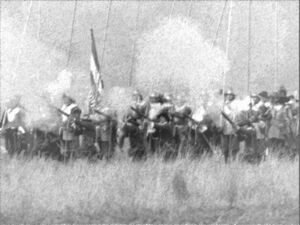The War of the Danish Succession, also known as the Second Great War or Northern Crown War, was a military conflict fought in northern and western Europe between 6th November 1909 - May 2nd 1917. With over 20 million casualties, it was one of the bloodiest wars in history, and is remembered bitterly in Russia and Germany.
While the claim by Swedish royal Thomas to the Danish throne is best known as the cause of the conflict, it also has roots in the growing influence of Russia and the Holy Roman Empire, which was watched suspisciously by the Nordic states. Both sides formed military alliances - in the former's case, a true coalition, in the latter's, a web of royal marriages and dynastic links - to combat invasion by one another. Tensions reached a height with the entry of Swedish family member Thomas into the Danish royal family, as heir to the incumbent King Erik VI. The opposition feared that such close relations between the superpowers would lead to first a unification of its members, then a full-on invasion of northern Europe. On 4th November 1909, Russian forces fired on outposts along the Finnish border, and within two days the forces were at war.
The war was the second of the three Great Wars, preceded by the Trade War and followed by the British Reclamation War, and was the largest in both casualties and involvement.

